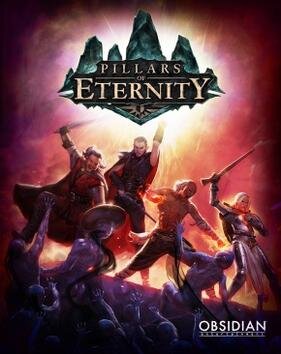Pillars of Health

Pillars of Eternity is a game whose approach to illness offers some suggestions to game designers and storytellers.
This morning I finished playing through Pillars of Eternity, a Baldur’s Gate-like isometric adventure game from Obsidian Entertainment that came out earlier this year. Not being much of a video-gamer, I hadn’t heard of the game until a friend of mine recommended it as a cure for some disappointments I’d had left over from Dragon Age: Inquisition, and although far, far, FAR from being perfect as a game, PoE was immensely satisfying. As I do with most games that I play, I found myself thinking about how the world and game mechanics approached physical and mental health, which I found particularly interesting in a game which had its own unique design in spite of being heavily influenced by classic D&D. I’m not going to talk at all today about the game’s portrayal of mental illness, in part because it ties inextricably into the game’s storyline and in part because, quite rightly, the game itself draws attention to how crude and barbaric its version of psychiatry really is (despite not being that much more horrific than real-world psychiatry was a mere sixty or seventy years ago). The game’s approach to physical illness is fairly clever, however, and could offer some suggestions to other game designers and storytellers.
Much like the old Star Wars d20 and a number of other games since, PoE splits health up into two scores. Characters have endurance, which is broadly speaking similar to most games’ hit points, and health, which is a sort of measure of global health. Characters who take damage in combat lose both health and endurance, but have a larger pool of endurance than health. Endurance is relatively easy to restore, as it’s the score which is replenished by healing potions and it quickly regenerates between combats. When endurance runs out, characters fall unconscious, and they revive when combat ends. In contrast, injuries take away health at the same rate as endurance, but because characters have more of it, it presumably takes multiple successive combats to bring down a character’s health. Only when health finally drops low is a character finally at risk of permanent consequences, but on the other hand, health is also harder to restore. In some ways, this system rather elegantly captures some aspects of real-world health. As people who’ve done a lot of sparring (or real fighting) know, a person tires quickly in a fight, but a lot of that energy comes back with a little bit of rest. Even if you catch your breath and feel ready for another match, however, a multiple fights in quick succession will leave even a well-trained fighter ready to drop, and eventually you just need some food and a good sleep to get back on your feet.
This health system also puts an interesting spin on combat classes. While several classes are combat-capable, fighters are the only class which automatically regenerates endurance during a fight. What this means is that fighters can stay on their feet in combat far longer than any other type of warrior, but because their health doesn’t regenerate the same way, they’ll still collapse under the pressure of multiple combats. It doesn’t completely change the tactics of a fighter, but it does mean they don’t get wielded in quite the same way as a paladin.
The game includes a variety of more specific injuries which can be sustained in combat or misfortune. In combat, characters can be blinded, hobbled, stunned, and weakened by both physical and magical attacks. By and large these all heal with a single rest, which to me seems to be letting a player off easily but, on the other hand, facilitates gameplay significantly. In various scripted events, characters can also bruise ribs, sprain limbs, and sustain concussions, which amused me tremendously. Much as with in-combat injuries, I felt that these injuries are a bit too quick to heal (I vividly remember injuring my knee three years ago and may never forget the two or three weeks it took before I could walk at a normal speed), but again, gameplay must take precedence over medical accuracy.
Most significantly, PoE takes place in a world without much in the way of healing magic. Unlike most fantasy games, diseases aren’t easily cured by spellcasters, which lends them a much deeper terror in the game setting. This has minimal impact on gameplay because disease doesn’t figure in the game as anything other than a plot device, but the writers do take the opportunity to explore a bit how a society without healing magic faces injuries and sickness.
While the system in PoE is by no means perfect, I admired that the designers tried out some mechanics that differed from their direct inspirations, and took chances with rules that I haven’t seen implemented in other games. I understand the appeal of keeping to the same rules you’ve used a thousand times over – I’m still running games using OGL3.5 and Vampire: the Masquerade, after all, although I keep meaning to give the newer D&D rules a try – but I’m overall very pleased with what Obsidian created. I’m not sure it’s going to change the way I run my own games, but it has helped me imagine health in a different way, and that’s probably already more than they were going for.
More than four years ago, Dr. Eris Lis, M.D., began writing a series of brilliant and informative posts on RPGs through the eyes of a medical professional, and this is the one that appeared here on June 6, 2015. Lis is a physician, gamer, and author of the Skirmisher Publishing LLC OGL sourcebook Insults & Injuries, which is also available for the Pathfinder RPG system.






